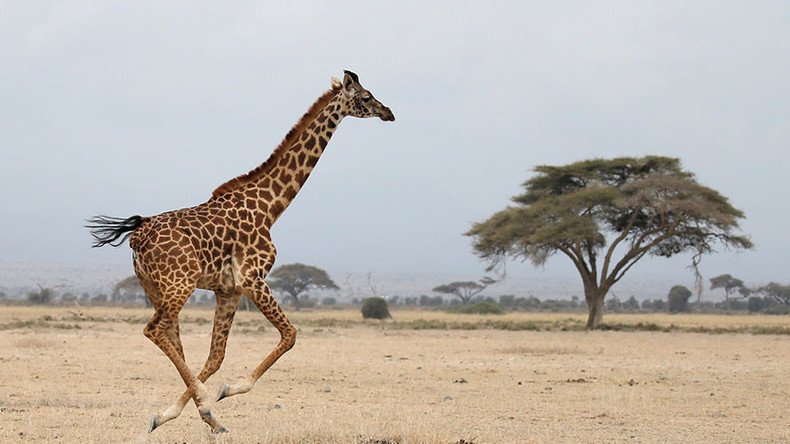Giraffe population plummets by a third, experts fear for species’ survival

Giraffe numbers around the world have dropped by almost 40 percent in three decades, leading conservationists to fear for the species’ survival.
The figures are released by The International Union for Conservation of Nature (IUCN) which reports the giraffe population as having decreased from between 151,702 and 163,452 in 1985 to 97,562 in 2015.
This decrease of between 36 and 40 percent has seen them move from the status of ‘Least Concern’ to ‘Vulnerable’ on the IUCN’s ‘Red List’ which monitors the conservation status of species.
New bird species and #giraffe under threat in latest update to @IUCNRedList - giraffe now classified as Vulnerable https://t.co/PXLomkBUyApic.twitter.com/bT0CXGDPly
— IUCN (@IUCN) December 8, 2016
Factors including a growing human population, expanding industries including mining, illegal hunting and civil unrest are all credited with contributing to their demise.
"In these war torn areas, in northern Kenya, Somalia, and Ethiopia in the border area with South Sudan, essentially the giraffes are war fodder, a large animal, extremely curious that can feed a lot of people,” Dr Julian Fennessy from the IUCN told BBC.
‘Giraffe tastiest meat I ever ate’ Swedish politician kills & eats lions, giraffes, hippos (PICS) https://t.co/oPinrH3WAE
— RT (@RT_com) June 22, 2016
"The species in southern Africa, those numbers are increasing by two to three times over the last three decades,” Fennessy said. “But when you come up through East Africa, those numbers have plummeted some by up to 95 percent of the population in the case of the Nubian giraffe, in the last three decades alone."
Fennessy added that people “are unaware that these majestic animals are undergoing a silent extinction.”
Of the subspecies of giraffe, three have increased in population, five decreased, and one showed no change, according to the IUCN. They now move into a higher-priority category on the organization’s ‘Red List’ alongside several species of birds, freshwater fish and crops including four mango species.
BREAKING: New bird species and giraffe under threat – @IUCNRedList. Crop wild relatives also assessed https://t.co/PXLomkTvXa@BirdLife_Newspic.twitter.com/Lbj0ofaWsT
— IUCN (@IUCN) December 8, 2016
The Tsavo Conservation Area in Kenya was used as an example of how to fight the decline in the giraffe population. The park uses a SMART (Spatial Monitoring and Reporting Tool) system, combining software and patrolling to monitor animals and identify threats, including poachers.
Earlier this year, the IUCN introduced a resolution at the World Conservation Congress to raise awareness of the threat to giraffes and called for an increase in funding for giraffe protected areas where they are monitored and managed.
READ MORE: Outrage as giraffe killed, dissected, fed to lions in front of kids at Copenhagen Zoo












